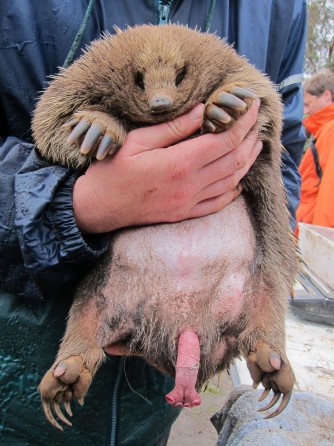I really despise Valentine’s day because I do not appreciate society telling me when I should feel romantic and loved-up and when I should not. HOWEVER as a bit of fun, I thought I would write a post about love, romance and sex but most importantly SCIENCE!
And testes*.
Testicles are funny things, and almost all healthy male vertebrates boast two of them. In many mammals, including ourselves, they hang from the body in a scrotum because the valuable sperm they contain are mighty fussy, and mammalian body temperature tends to be just a little too hot for them. So natural selection kindly began dangling the sperm of males from two sacs between the rear legs, nice work evolution. But it turns out that we can tell a lot about a species’ mating system (i.e. how monogamous or promiscuous they are) just from looking at the size of the male testis. The diagram below is both hilarious and helpful:
Here you can see the gonad size of various primate species in relation to body size. The top row are the males – the big circle represents their body size, the arrow is the penis and the balls are, well, the balls. (No laughing at the gorilla and yes guys, your penis is quite large compared to our primate cousins). The bottom row shows the female sexual organs of the same species – I can’t help but giggle at the human female. MASSIVE BOOBIES!
So the size of the testes can tell us a lot of information about the mating system adopted by various species. We have to remember that although in our culture monogamy is often (rightly or wrongly) seen as the norm, this is far from the case in most other mammalian species. There are lots of different mating systems: monogamy (one male one female), polygyny (one male, several females), polyandry (one female, several males) and promiscuity (basically a free-for-all orgy where it is completely acceptable for anyone to have sex with anyone).
Males of species with promiscuous mating systems (such as chimpanzees) tend to have the largest testes, and this makes sense because of something called sperm competition. In a promiscuous mating system, lots of males are having sex with lots of females, and everyone wants a good shot at fathering the most offspring, because this means passing on your genetic material and is a big fat evolutionary WIN. So for this reason it is advantageous to have a lot of sperm, and big old testes to store the little guys in.
However, the males of species with polygynous mating systems (e.g. gorillas) tend to have smaller testes, because a single male has almost guaranteed access to at least a couple of females. So there is no need to waste extra energy on producing lots and lots of sperm in giant testicles, because his chances of impregnating a female is pretty high and he has no competition to wane off.
Now I know what you’re thinking. Where do we fit in all of this? Well guys, I have to say, your testicles are classified as “moderate”. Bigger than a gorilla, but shy of a chimp. This actually fits well into the mating system hypothesis – although humans are often socially monogamous, they do participate in moderate levels of non-monogamy (SHOCK HORROR KLAXON)!!
So there you have it. The bigger the balls, the more promiscuous the sexy-times. But smaller testicles aren’t for losers – it just means they don’t have to try so hard! Quality over quantity perhaps? Maybe that just means more time and energy can be spend on post-coital cuddles or, you know, child-rearing.
So whether you have testes or ovaries, and regardless of their size, I wish you all a very happy and sexy V-day.

A bonobo with large testicles chillin’ out. Source
*I will leave it up to you to guess what type of mating system this squirrel may participate in.





